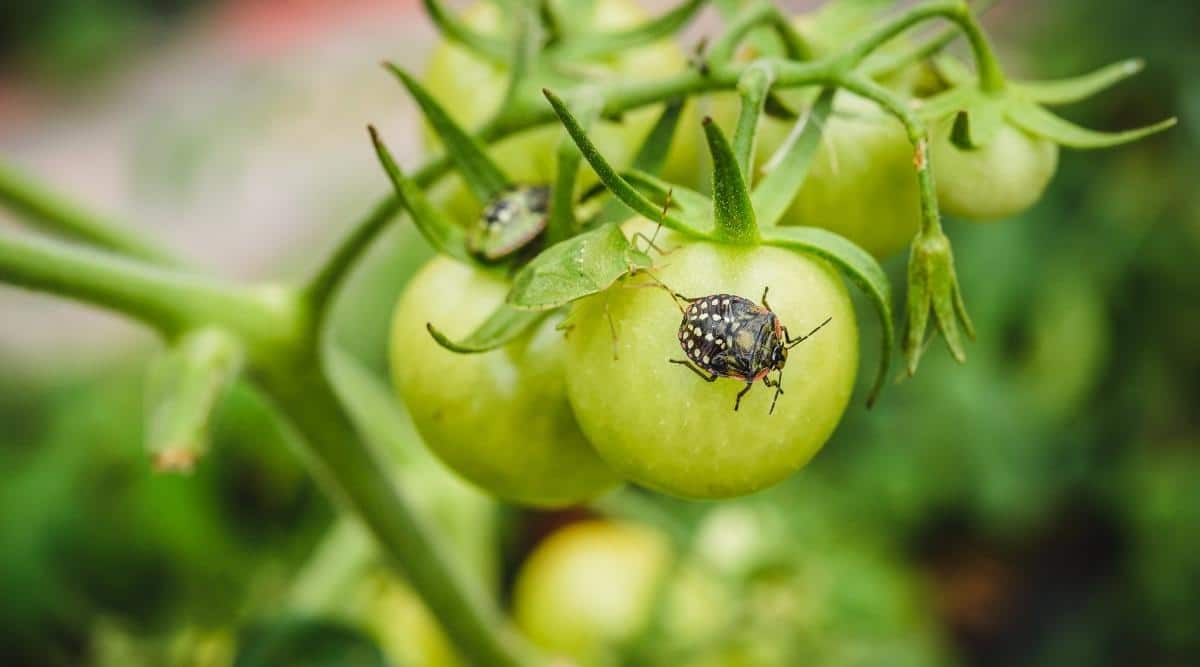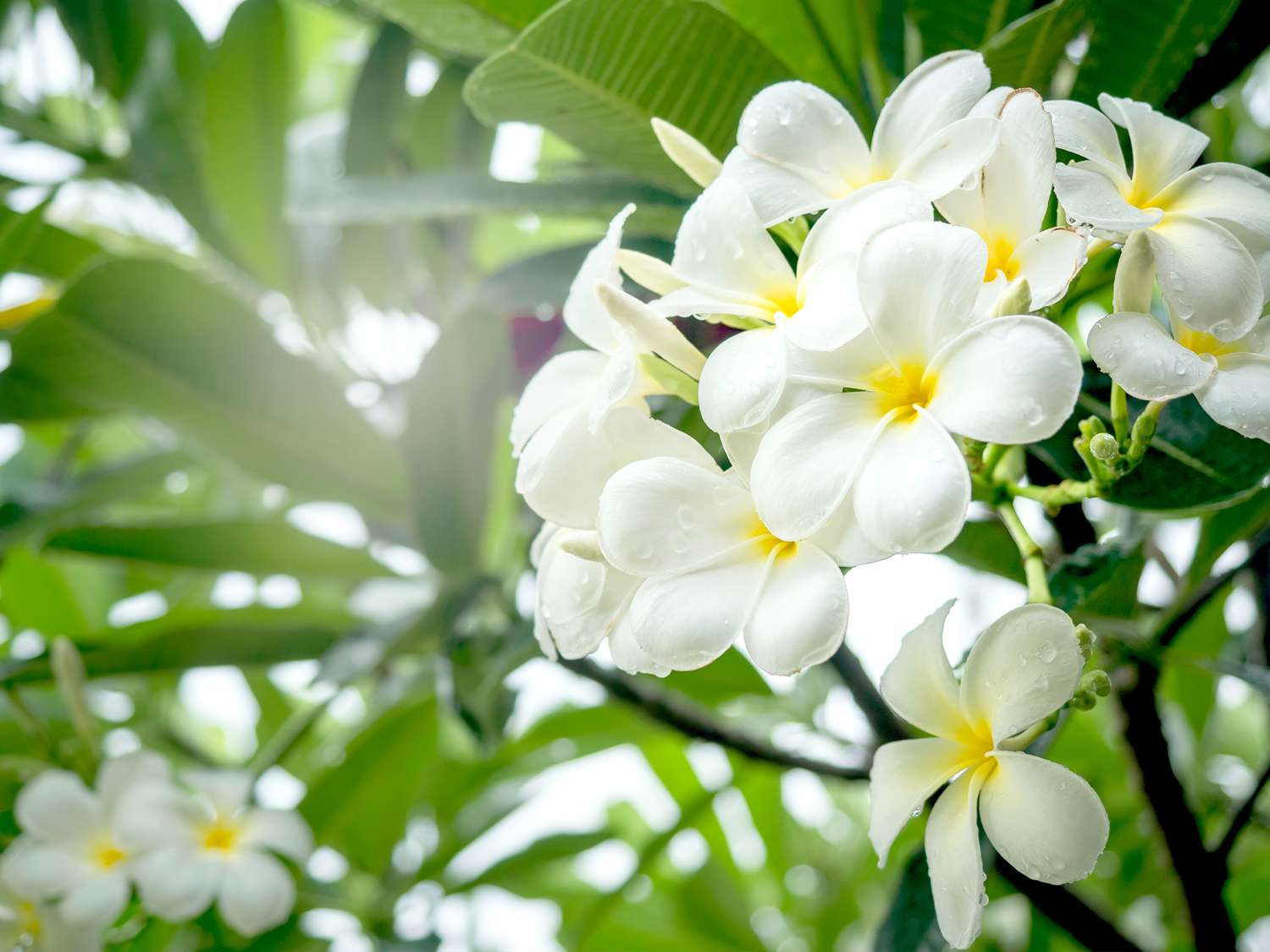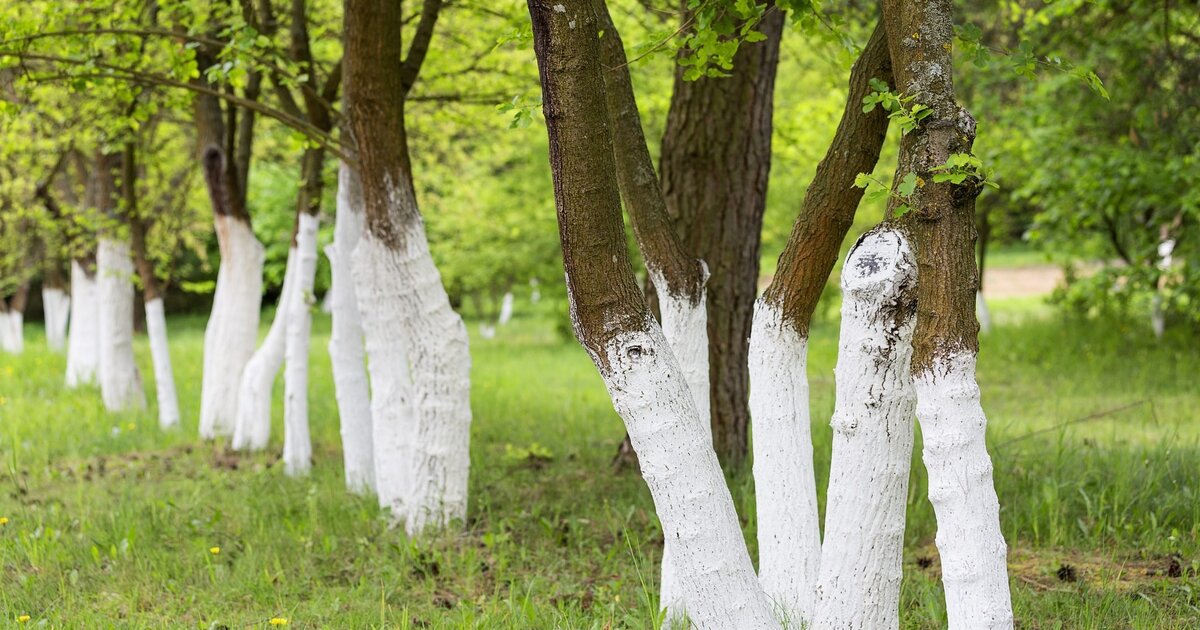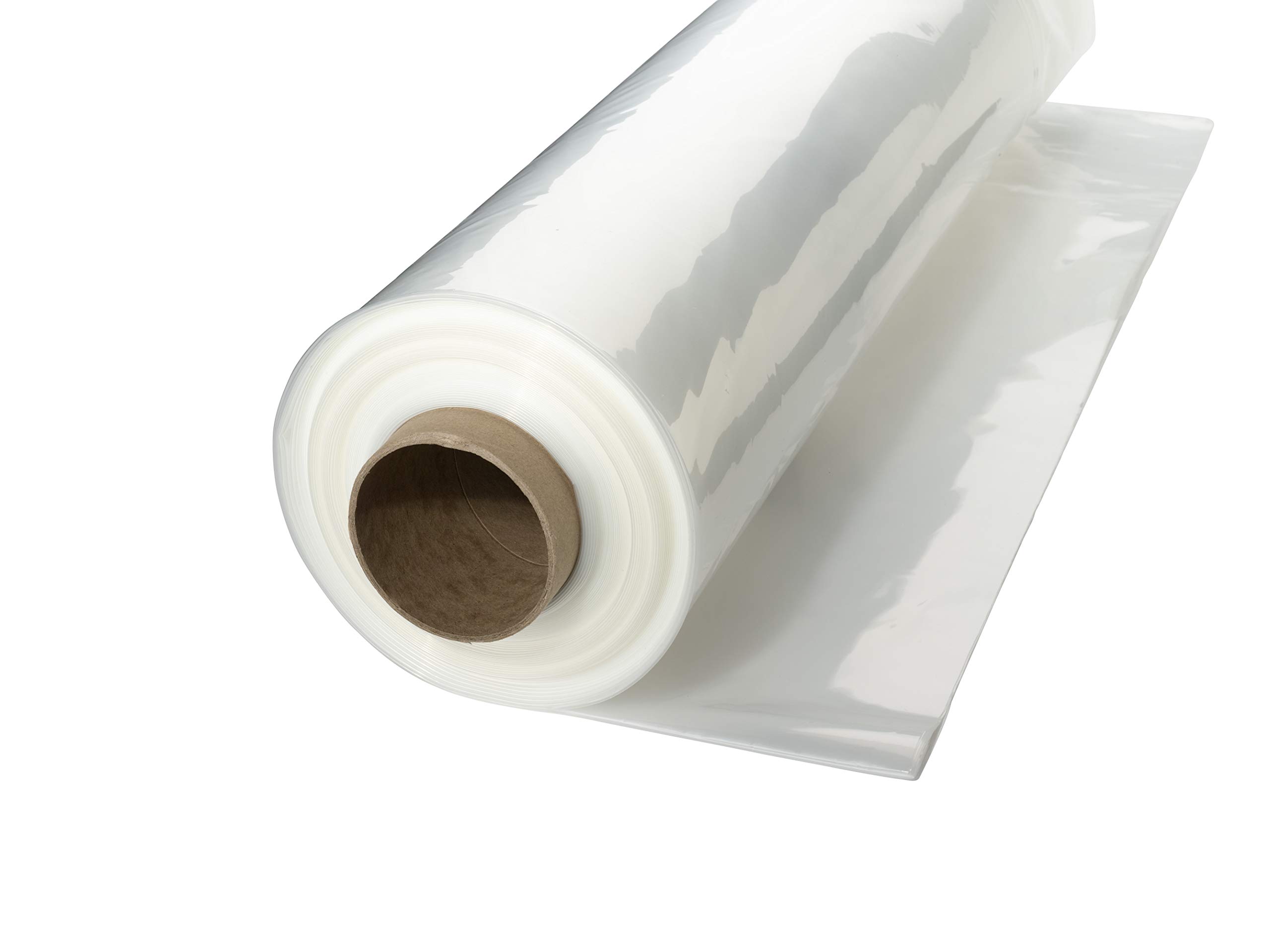Home>Gardening News and Trends>Latest News>What Is The White Insects On Plants
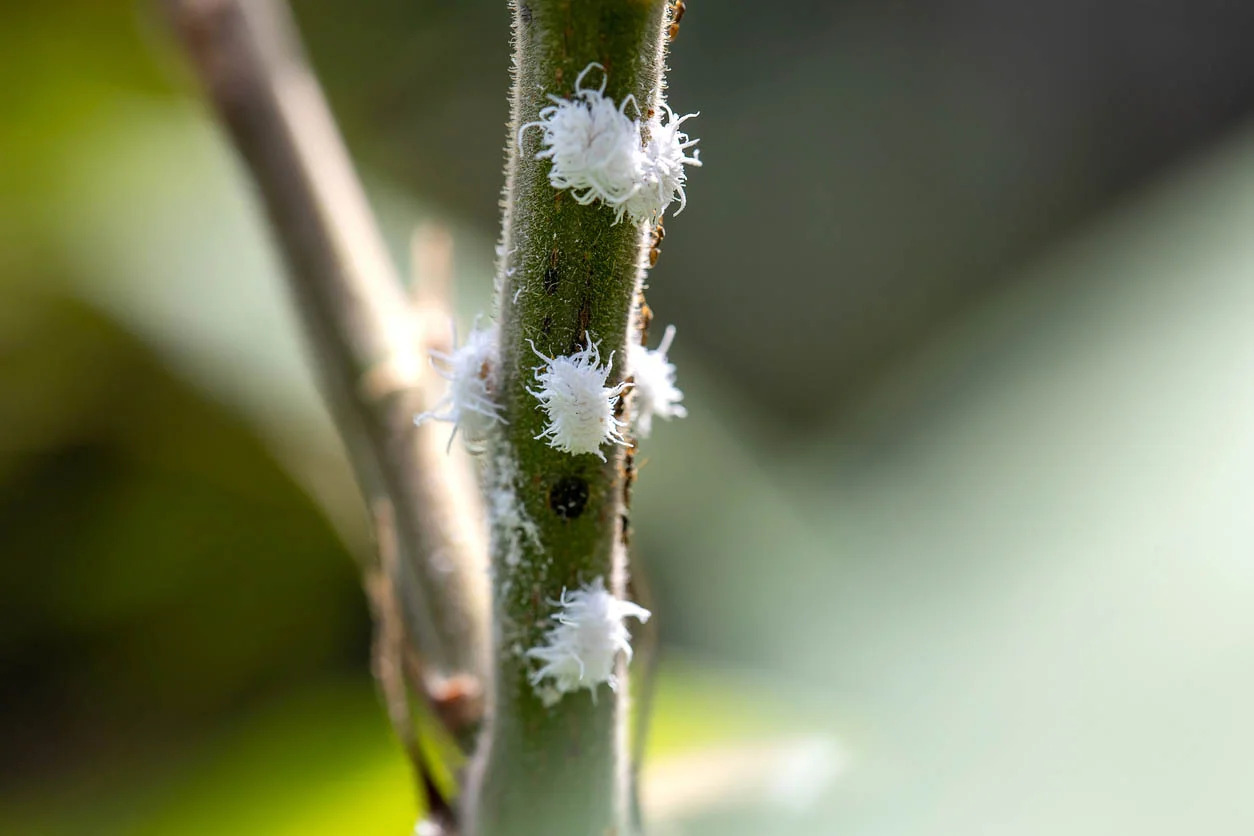

Latest News
What Is The White Insects On Plants
Modified: January 22, 2024
Get the Latest News about What Is The White Insects On Plants. Discover how to identify and treat these pests to protect your plants.
(Many of the links in this article redirect to a specific reviewed product. Your purchase of these products through affiliate links helps to generate commission for Chicagolandgardening.com, at no extra cost. Learn more)
Table of Contents
Introduction
When it comes to gardening, encountering pests is an unfortunate but common occurrence. One particular type of pest that can wreak havoc on your plants is white insects. These small, white creatures can infest various parts of your plants, causing significant damage if left unchecked. Understanding the characteristics of these insects and learning how to identify and control them is essential in maintaining the health and vitality of your garden.
White insects come in different species, each with its own distinct features and behaviors. Some of the most common types of white insects on plants include aphids, mealybugs, scale insects, and whiteflies. These pests can be found on the leaves, stems, and even the roots of your plants, sucking out their sap and causing a decline in overall plant health.
Identifying white insects on your plants is the first step in effectively managing their infestation. It is crucial to distinguish them from other pests or diseases that may have similar visual appearances. Once identified, you can implement appropriate control measures to minimize their impact and prevent further damage.
There are both natural and chemical methods available for controlling white insects, depending on the severity of the infestation and personal preferences. Natural methods include introducing beneficial insects, such as ladybugs or lacewings, that feed on white insects. Additionally, homemade remedies like neem oil or insecticidal soap can be effective in reducing their populations.
For more severe infestations, chemical control options may be necessary. Insecticides specifically formulated to target and eliminate white insects can be applied, following the instructions provided by the manufacturer. However, it is crucial to use these chemicals judiciously and responsibly to minimize any potential harm to beneficial insects and the environment.
Preventing white insect infestations in the first place is always the best approach. Regularly inspecting your plants for signs of pests, practicing good sanitation, and providing optimal growing conditions can significantly reduce the risk of infestations. This includes proper watering, fertilization, and maintaining a healthy balance in your garden ecosystem.
In the following sections, we will delve deeper into the characteristics of white insects, the damage they can cause, methods for identification, and various control options. By equipping yourself with this knowledge and taking proactive measures, you can protect your plants from these troublesome pests and enjoy a thriving garden.
Common Types of White Insects on Plants
White insects can take on various forms and belong to different species. Understanding the specific types of white insects that commonly infest plants can help in identifying and effectively managing their presence. Let’s take a closer look at some of the most frequently encountered white insects in gardens:
- Aphids: These small, soft-bodied insects are commonly found on the undersides of leaves. Aphids can be white, green, black, or brown and are notorious for their rapid reproduction rate. They feed on plant sap, causing leaves to curl and become distorted.
- Mealybugs: Mealybugs are small, oval-shaped insects that appear covered in a white, waxy substance. They primarily infest the stems and undersides of leaves, sucking sap from the plant. Mealybugs can weaken the plant, cause yellowing of the leaves, and excrete sticky honeydew, leading to the growth of black sooty mold.
- Scale insects: Scale insects have a protective shell-like covering that appears as white bumps on plant stems and leaves. These insects feed on plant fluids, weakening the plant and causing yellowing of leaves. Heavy infestations can cause plant decline or death.
- Whiteflies: These tiny, white insects closely resemble miniature moths. They gather on the undersides of leaves, sucking plant sap and leaving behind sticky honeydew. Whitefly infestations can lead to leaf yellowing, stunted growth, and even plant death.
It is important to note that each type of white insect may have different preferences for plant species and may display unique behavior patterns. Identifying the specific type of white insect infesting your plants can aid in selecting the most appropriate control method to tackle the problem effectively.
Now that we have a better understanding of the common types of white insects found on plants, let’s explore their characteristics and the damage they can cause in the following sections.
Characteristics of White Insects
White insects have unique characteristics that distinguish them from other pests commonly found in gardens. Understanding these characteristics can help in accurately identifying and dealing with infestations. Here are some key characteristics of white insects:
- Color: As the name suggests, white insects are predominantly white in color. However, they may also appear in different shades, such as light yellow or off-white. This coloration helps them blend in with the plant surfaces, making them harder to spot.
- Size: White insects vary in size depending on the species. Aphids, for example, are usually tiny, measuring around 1-3 millimeters in length. Mealybugs are slightly larger, reaching up to 5 millimeters in size. Scale insects and whiteflies are typically smaller than 1 millimeter.
- Physical Structure: White insects can have different physical structures. Aphids and whiteflies have soft bodies, while mealybugs and scale insects have a protective waxy coating. Scale insects also have a shell-like structure that covers their bodies.
- Method of Feeding: White insects primarily feed on plant sap, piercing plant tissue with their mouthparts and extracting the vital fluids. This feeding activity can weaken the plant and make it more susceptible to disease and other environmental stresses.
- Reproduction Rate: Many white insects have a high reproductive capacity, allowing them to multiply rapidly and infest plants in large numbers. This can lead to exponential growth of the infestation if not addressed promptly.
- Behavior: White insects may exhibit different behaviors. Some species, like aphids and whiteflies, tend to cluster together on the undersides of leaves, while others, such as scale insects and mealybugs, may spread across stems and foliage. They often secrete a sticky substance called honeydew, which can attract ants and promote the growth of sooty mold.
Understanding these characteristics can help in more accurate identification of white insect infestations, allowing for timely intervention and control measures. In the next section, we will explore the damage that white insects can cause to plants.
Damage Caused by White Insects
White insects can cause significant damage to plants if left unchecked. Their feeding habits and rapid reproduction rate can lead to a range of negative effects. Here are some of the common types of damage caused by white insects:
- Weakening of Plants: White insects feed on plant sap, depriving the plant of essential nutrients. This can weaken the overall health of the plant, making it more susceptible to diseases, other pests, and environmental stressors.
- Leaf Damage: White insects like aphids and mealybugs feed on the sap of leaves, causing visible damage. Leaves may develop yellowing, wilting, and curling. They may also become distorted or have a stunted growth appearance.
- Plant Decline or Death: In severe infestations, the continuous sap-sucking activities of white insects can cause extreme stress to the plant. This can lead to stunted growth, leaf drop, and eventually, plant decline or death.
- Spread of Diseases: White insects are known vectors of certain plant diseases. As they move from plant to plant, they can transmit viruses, bacteria, and fungi, further compromising the health of your plants.
- Sooty Mold: The honeydew excreted by white insects serves as a food source for sooty mold, a black fungal growth. This mold can cover leaves and stems, inhibiting photosynthesis and reducing the plant’s ability to absorb sunlight and produce energy. It can also impact the aesthetics of your plants.
- Reduced Yield: White insect infestations can affect the productivity of flowering plants, fruits, and vegetables. Damage to stems, buds, and flowers can result in reduced or deformed crop yields.
The extent of damage caused by white insects can vary depending on the severity of the infestation and the susceptibility of the plant species. Early detection and implementation of appropriate control measures are crucial in minimizing the negative impact on your plants.
Next, we will explore methods to identify white insects on plants and distinguish them from other pests.
How to Identify White Insects on Plants
Identifying white insects on plants is essential for implementing effective control measures. While they may be small and blend in with the plant surfaces, there are several ways to identify them. Here are some methods to help you identify white insects:
- Visual Inspection: Start by carefully examining the leaves, stems, and undersides of the affected plant. Look for small white or pale-colored insects crawling, flying, or clustered together. Pay attention to their size, shape, and movement patterns.
- Woolly Coatings: Some white insects, like mealybugs, are covered in a white, waxy substance that resembles cotton or wool. These fluffy or fuzzy appearances can help identify the presence of mealybugs.
- Shells or Coverings: Scale insects have a protective shell-like covering, appearing as raised bumps on the plant. Check for these bumps and look closely for any white insects underneath the shells.
- Honeydew: White insects often excrete a sticky substance called honeydew. Look for shiny or sticky leaves, as well as the presence of black sooty mold, which can develop on the honeydew.
- Sap-Sucking Damage: Observe the effects of white insect feeding. Look for distorted, curling, or yellowing leaves, as well as stunted growth or wilting. These signs indicate the presence of sap-sucking pests like aphids or whiteflies.
- Behavior Patterns: Take note of the behavior of the white insects. Some species may cluster together on the undersides of leaves, others may crawl along stems, and some may fly when disturbed.
It is important to differentiate white insects from other pests or plant abnormalities that may have similar appearances. For example, certain fungal infections and powdery mildew can give a white or powdery appearance on leaves. Observing these distinguishing characteristics can help in accurate identification.
If you’re having difficulty identifying the white insects on your plants, consult with a local gardening expert or a professional entomologist who can provide further guidance.
In the next sections, we will explore various control options for white insects, including natural methods and chemical interventions.
Natural Methods to Control White Insects
When dealing with white insects on plants, it is always beneficial to consider natural methods of control before resorting to chemical interventions. These natural approaches are generally safer for the environment, beneficial insects, and overall plant health. Here are some effective natural methods to control white insects:
- Beneficial Insects: Introduce natural predators of white insects into your garden. Ladybugs, lacewings, and parasitic wasps are known to feed on aphids, mealybugs, and whiteflies. You can attract these beneficial insects by planting flowers such as daisies, marigolds, and yarrow.
- Insecticidal Soaps and Oils: Use insecticidal soaps or oils to control white insects. These products suffocate the pests by coating their bodies and interfering with their respiratory system. Apply the soap or oil directly to the affected areas of the plants, covering both the upper and lower leaf surfaces.
- Neem Oil: Neem oil, derived from the neem tree, is a natural insecticide and repellent. It disrupts the feeding and reproductive capabilities of white insects, effectively reducing their populations. Dilute neem oil with water and spray it on the plants, ensuring thorough coverage.
- Homemade Remedies: Create your own homemade insecticidal sprays using ingredients like garlic, onion, or hot pepper. These natural repellents can discourage white insects from feeding on your plants. However, be cautious when preparing and applying homemade remedies and test them on a small portion of the plant first to avoid any potential damage.
- Pruning and Trimming: Remove heavily infested plant parts, including damaged leaves and stems. Pruning helps eliminate existing white insects and reduces their population. Dispose of the pruned material properly to prevent re-infestation.
- Cultural Practices: Maintain a clean and healthy garden by practicing good hygiene. Remove fallen leaves and debris from the ground, as they can harbor white insects. Regularly inspect your plants for signs of infestation and take immediate action if any pests are detected.
Remember, natural methods may require additional time and effort compared to chemical control options. Consistency and persistence are key to achieving satisfactory results using natural approaches. It is important to monitor the progress and adjust your methods as needed to effectively control white insects.
In the following section, we will explore chemical control options for white insects when natural methods are not sufficient or in cases of severe infestations.
Chemical Control Options for White Insects
In cases of severe white insect infestations or when natural methods have proven ineffective, chemical control options can be considered. It is important, however, to use these options judiciously and responsibly to minimize potential harm to beneficial insects and the environment. Here are some chemical control options for white insects:
- Insecticidal Sprays: Select an insecticide specifically formulated to target white insects. These sprays often contain active ingredients like pyrethroids or neonicotinoids. Follow the instructions on the label carefully and apply the insecticide directly to the affected plant parts, focusing on the areas where the white insects are present.
- Systemic Insecticides: Systemic insecticides are absorbed by the plant and circulate through its tissues, making them effective against white insects that feed on sap. These insecticides are typically applied to the soil or injected into the trunk, and they can provide long-lasting control by targeting both adult insects and their nymphs.
- Microbial Insecticides: Microbial insecticides contain naturally occurring microorganisms, such as Bacillus thuringiensis (Bt), which specifically target certain pests like caterpillars. While they may not directly control white insects themselves, they can help in reducing other pests in the garden that may indirectly contribute to white insect infestations.
- Professional Treatment: In severe infestations or if you are unsure of the appropriate chemical control methods, consult with a professional pest control service. They can assess the situation and provide targeted treatments with minimal impact on the environment.
Before using any chemical control option, it is crucial to read and follow the instructions provided by the manufacturer. Wear appropriate protective clothing and ensure that the insecticide is applied in line with safety guidelines.
It is important to note that chemical control options should be a last resort and used sparingly. Whenever possible, consider incorporating natural methods and cultural practices to prevent and manage white insect infestations.
In the next section, we will explore prevention and management strategies to minimize the occurrence of white insect infestations in your garden.
Prevention and Management of White Insect Infestations
Preventing and managing white insect infestations requires a proactive approach and consistent monitoring of your garden. By implementing effective prevention strategies and practicing good garden management, you can minimize the occurrence of white insect infestations. Here are some prevention and management techniques:
- Regular Inspections: Regularly inspect your plants for any signs of white insects or other pests. Pay close attention to the undersides of leaves, stems, and new growth where these insects tend to hide.
- Sanitation: Maintain a clean garden environment by removing fallen leaves, weeds, and plant debris. White insects and their eggs can be present on these materials, so proper disposal prevents re-infestation.
- Watering Practices: Avoid overwatering, as excess moisture can create favorable conditions for white insects. Water your plants at the base, directing the water to the roots instead of wetting the foliage excessively.
- Proper Plant Nutrition: Provide your plants with appropriate nutrients and fertilization to strengthen their defenses against pests. Healthy plants are more resistant to white insect infestations.
- Companion Planting: Interplanting aromatic herbs like basil, chives, and cilantro can help repel white insects. Additionally, certain companion plants can attract beneficial insects that feed on white insects, providing natural pest control.
- Physical Barriers: Use garden nets or row covers to create a physical barrier that prevents white insects from accessing your plants. This is especially useful in protecting young seedlings and vulnerable plants.
- Rotation and Diversity: Rotate the location of your plants each growing season to disrupt the life cycle of white insects. Additionally, promote biodiversity in your garden by planting a variety of flowers, vegetables, and herbs. This attracts beneficial insects and creates a more resilient ecosystem.
- Early Intervention: At the first sign of white insect infestation, take immediate action. Remove and destroy heavily infested plant parts, employ natural control methods, or consider targeted chemical interventions if necessary.
By adopting these prevention and management techniques, you can reduce the risk of white insect infestations and maintain a healthy garden environment. Regular monitoring and proactive measures are key to minimizing the impact of pests and ensuring the well-being of your plants.
In the concluding section, we will briefly recap the key points covered in this article regarding white insects on plants.
Conclusion
White insects can pose a significant threat to the health and vitality of your plants. Understanding their characteristics, identifying their presence, and implementing appropriate control measures are essential in keeping your garden thriving. In this article, we explored the common types of white insects, including aphids, mealybugs, scale insects, and whiteflies, and discussed their characteristics and the damage they can cause.
We learned how to identify white insects on plants through visual inspection, noting their color, size, physical structure, and behavior patterns. We also discussed the damage caused by these pests, including weakening of plants, leaf damage, the spread of diseases, the presence of sooty mold, and reduced crop yields.
Furthermore, we explored natural methods to control white insects, such as introducing beneficial insects, using insecticidal soaps and oils, utilizing neem oil, and implementing cultural practices like pruning and trimming. Chemical control options were also discussed, including the use of insecticidal sprays, systemic insecticides, microbial insecticides, and professional treatments when necessary.
Prevention and management techniques were explored as well, emphasizing the importance of regular inspections, sanitation, proper watering practices, plant nutrition, companion planting, physical barriers, rotation and diversity, and early intervention.
By combining these prevention, identification, and control strategies, you can effectively manage white insect infestations in your garden, promoting the health and longevity of your plants while minimizing harm to the environment. Remember to opt for natural control methods whenever possible and use chemical control options responsibly.
With a proactive and well-informed approach, you can protect your garden from the detrimental effects of white insects and create a thriving, pest-free environment for your plants to flourish.

